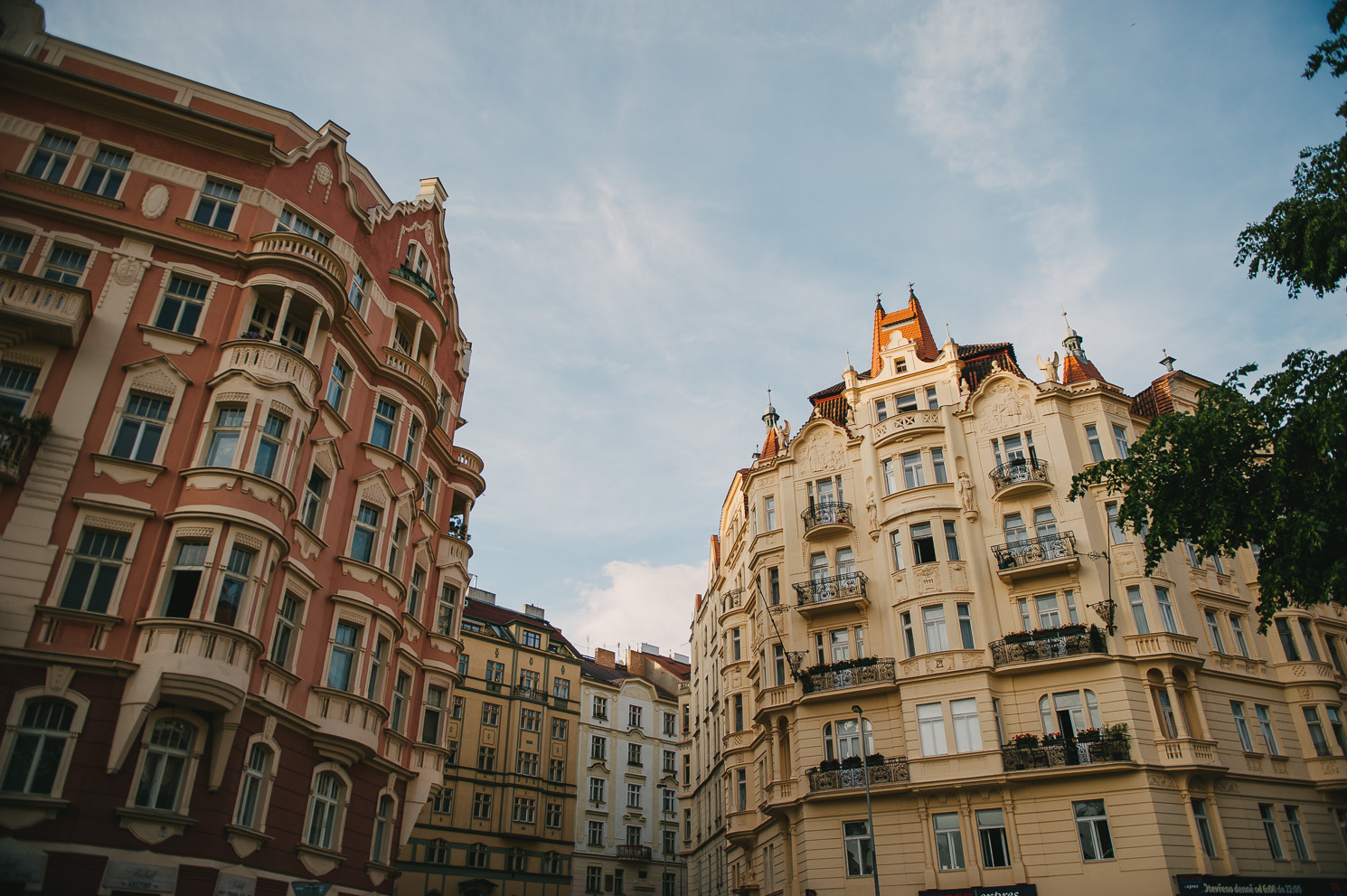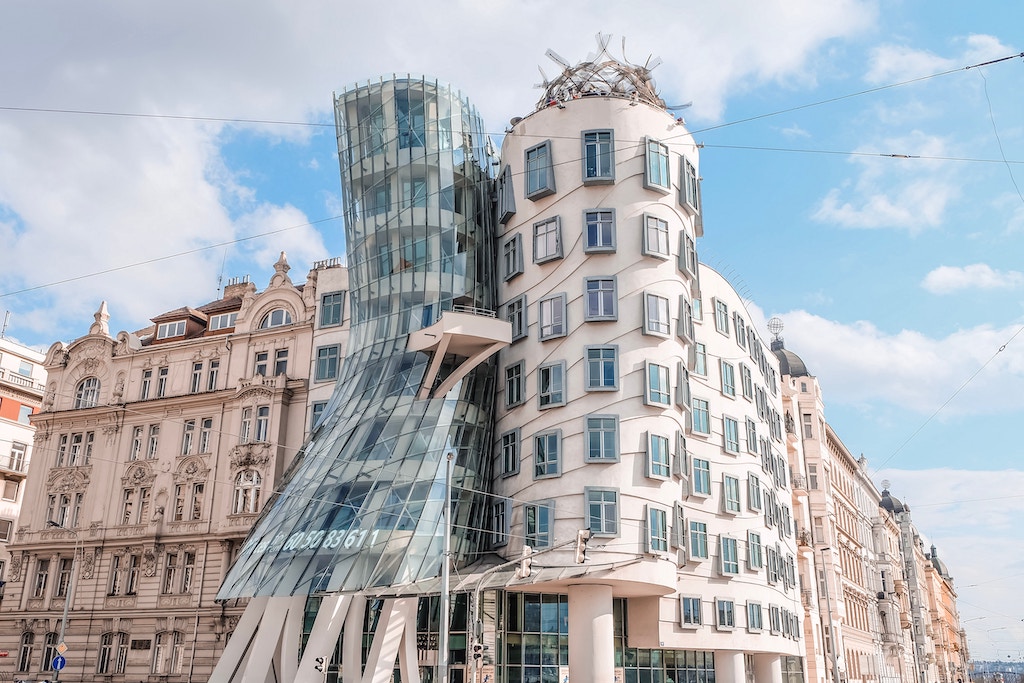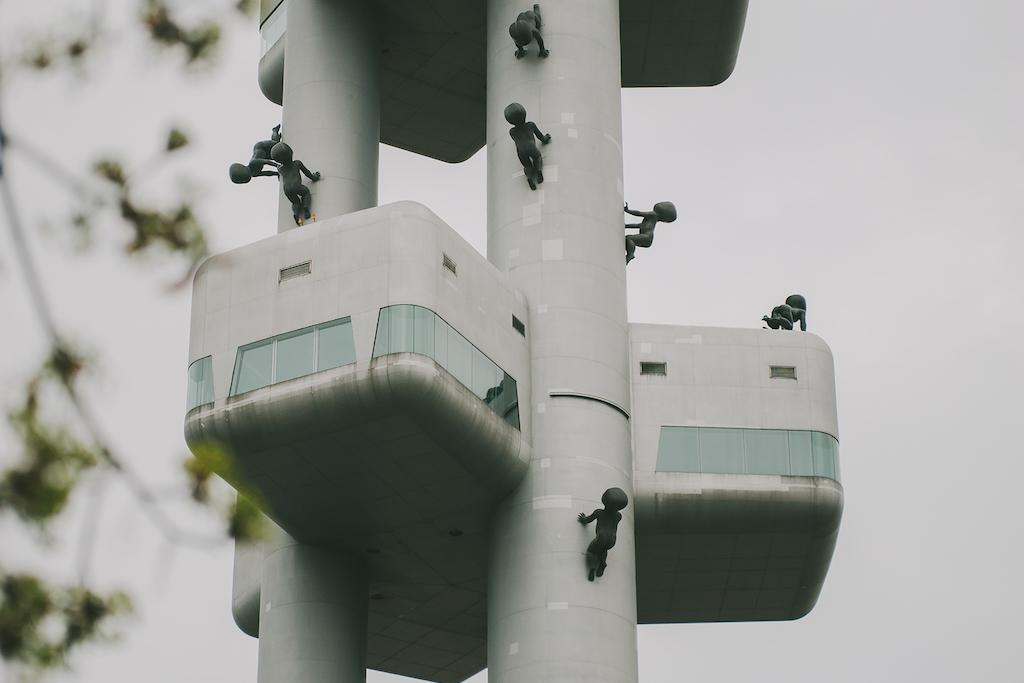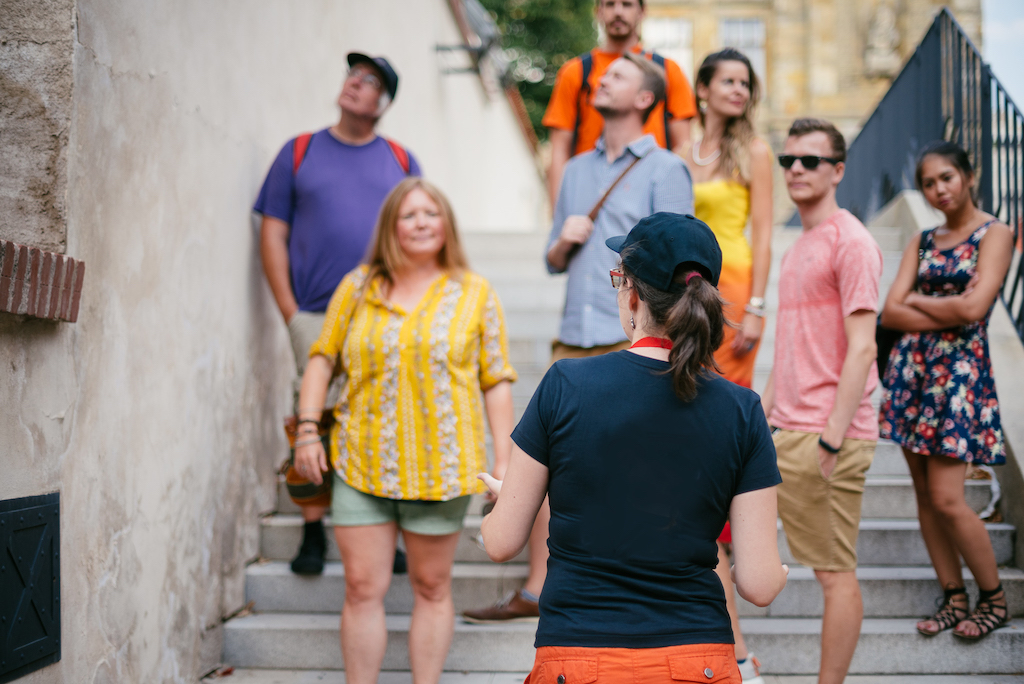Architecture in Prague

Welcome to Prague. Look at the buildings! The history of architecture is told in just a short walk. Romanesque, Gothic, Renaissance, and Baroque is everywhere. But mixed in between you will see much later styles. Art nouveau all over the place. A Dancing House? A strange looking coffee shop in old town? A weird tower with babies? What are these things?!
Prague has had the fortune to survive throughout history with its architecture remaining intact. Even with its involvement in many historical wars, overall Prague remained almost untouched. Surprisingly, during the Nazi occupation of the city, even the Jewish Quarter got through; something unheard of in most occupied cities. Add to this fact that the Czech architects seemed to investigate new ways of creating and using the buildingsʼ space and facade in a strange, obsessive, and somewhat maniacal glee. The result is today, there is a myriad of unusual, beautiful, and sometimes very ugly buildings throughout the city.

As for the older general styles, there are only about four Romanesque style buildings left, the most popular being St. Georges Basilica at the Prague Castle. Gothic, a bit easier to find. The most obvious two might be the Tyn Church in Old Town Sq. or St Vitus Cathedral also at the Castle. Renaissance is often found on different corners and courtyards and there are a few facades that still can be found throughout the city. Baroque is everywhere. In other words, Prague has basically the same situation as many older cities.
Then come the 1900s and things get bouncing in Prague. In 1911 the Group of Fine Arts was formed, with many artists and designers who would later make a name for themselves in Prague. From this group comes the creators of the Cubist style buildings found in the city. The most popular is the House of the Black Madonna. Built in 1912 by the 31-year-old Josef Gočár, this building houses the only Cubist coffee shop in the world on the second floor. There is also a museum and shop selling everything from furniture to chess sets to sugar bowls, all in a Cubist design. As in all Cubist architecture, it really doesnʼt reshape the building as much as redecorate the facade. The use of triangles attempts to give a visual depth on these buildings. This school of thinking only lasts until about 1914 or so. The Group of Fine Arts broke up as WWI began.

After WWI some of the same artists left the triangle behind to utilize the circle in what became know as Rondo Cubism. Many of these artists would also go on and help to form Art Deco, others would move on to Modernism.
Another style seen throughout Prague is Brutalism. Truthfully, the name says it all. A form of Modernism that wanted to show function over beauty or, as one of my friends named it, “concrete boxes with lots of windows and steel, sometimes without windows.” Another one called it “concrete Legoʼs.” It starts around 1950 and runs through the 1980s. Though it certainly was helped along due to communismʼs “Functionalism,” there were certainly many examples of this style on the other side of the iron curtain.

A well-known building in Prague is the Dancing House. It is also known as the Fred and Ginger House, referring to the great dancing team of Fred Astaire and Ginger Rogers. Designed by Vlado Milunić and Frank Gehry, this building was built on a vacant lot along the riverfront. Finished in 1996, it seems it took a bit of time for some of the locals to accept this building. Now, it is a sight many tourists come to see.
Speaking of strange buildings, you canʼt spend a couple of days in Prague without seeing a big ugly tower. This old Communist TV tower is even stranger if you are up close and spot the statues of babies seeming to crawl up the tower. Yes, perhaps there are no better experts at taking strange and adding strange to it than the Czechs. The tower was started in 1985 and finished in 1992, but the babies will not be added until 2000. They are known as Černýʼs babies, after the contemporary Czech artist David Černý, who designed them. If you decide a visit to the tower is in order, be sure to enjoy the neighborhood full of little shops, pubs, and restaurants.

No list of Czech buildings is complete without mentioning the Legion Bank building. This hard-to-describe bit of work was conceived by Josef Gočár, the designer of the House of the Black Madonna. The exterior of the building has been described as Rondo Cubist, and yet the interior is more Art Deco. The exterior has a frieze by Otto Gutfreund depicting the Czech military marching and fighting in Russia during WWI. The interior has a fountain and, on the second floor, there is a very interesting dome. This building still functions as a bank, but tourists are welcome to visit and see it for themselves.
The amazing thing about all these strange buildings is they still seem to fit in right next to the older styles of architecture. OK, maybe not the TV tower but, after a while, even I have gotten used to it.

You can learn more about architecture in Prague by joining us on our Prague City Highlights Tour. You can also ask any of our guides for more information.
April 8, 2019

